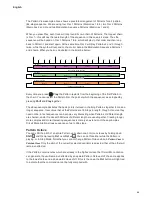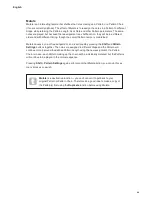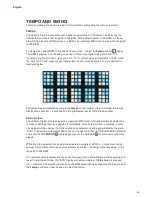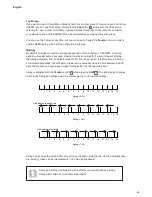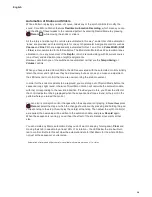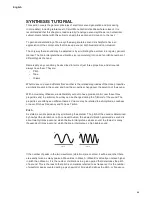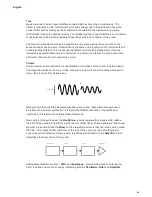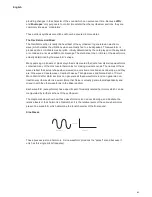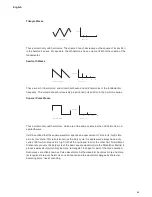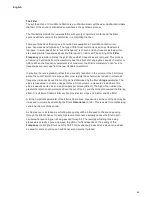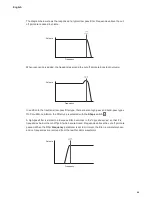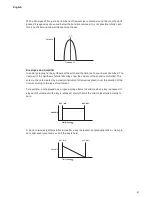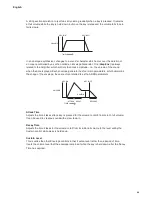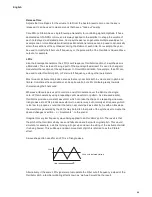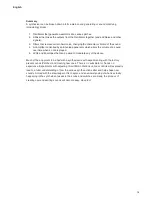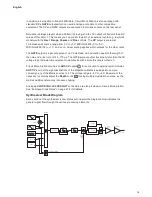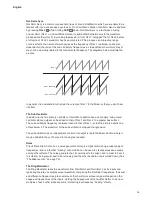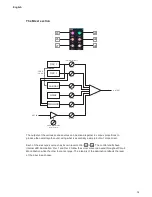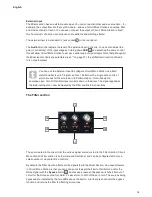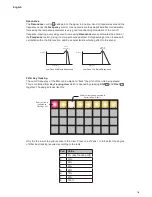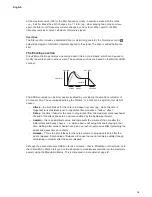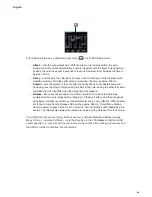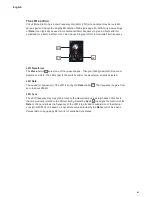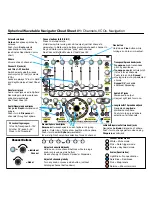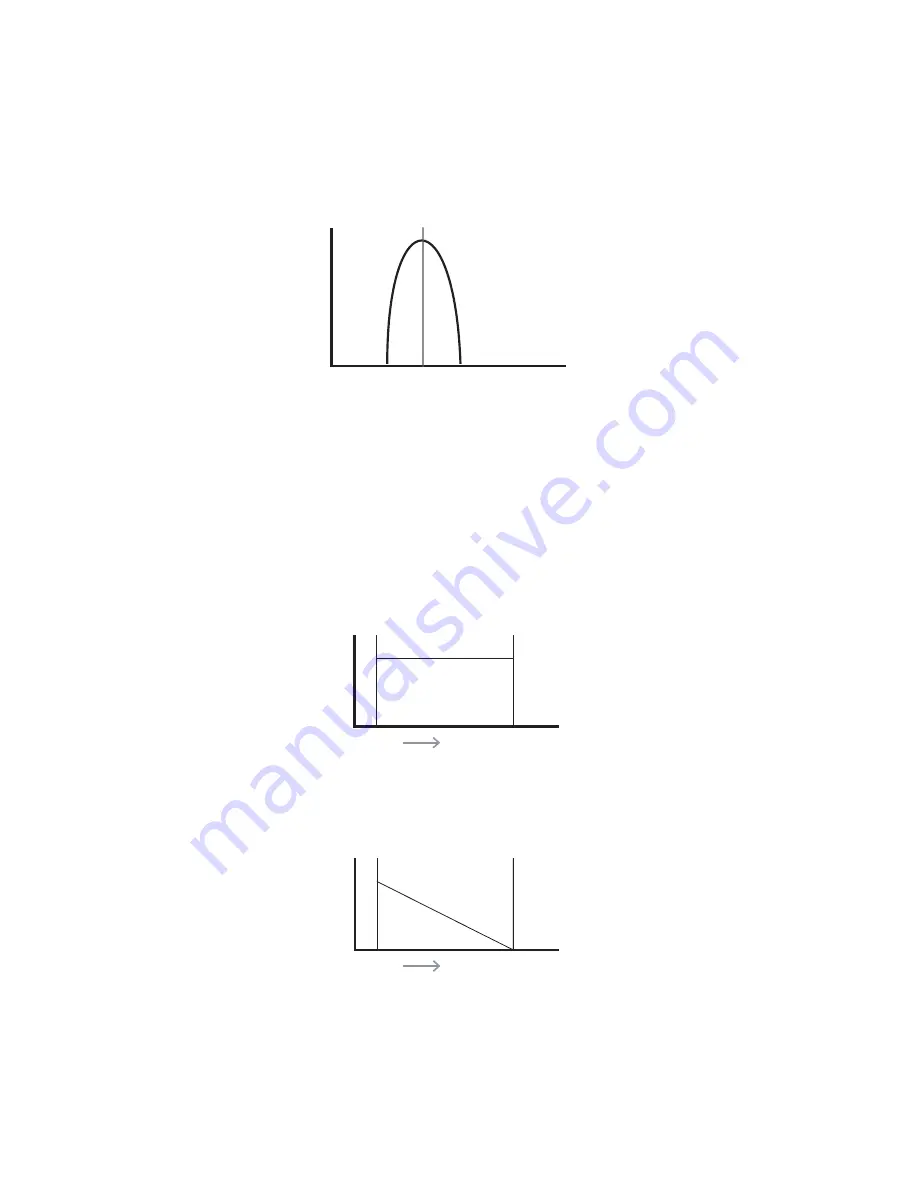
67
English
With a band-pass filter, just a narrow band of frequencies centered around the cut-off point is
passed. Frequencies above and below the band are removed. It is not possible to fully open
this type of filter and allow all frequencies to pass.
Volume
Volume
Frequency
Cut-off
Frequency
Volume
Volume
Frequency
Cut-off
Frequency
Frequency
Cut-off
Frequency
Frequency
Cut-off
Frequency
Envelopes And Amplifier
In earlier paragraphs, the synthesis of the pitch and the timbre of a sound was described. The
next part of the Synthesis Tutorial describes how the volume of the sound is controlled. The
volume of a note created by a musical instrument often varies greatly over the duration of the
note, according to the type of instrument.
For example, a note played on an organ quickly attains full volume when a key is pressed. It
stays at full volume until the key is released, at which point the volume level falls instantly to
zero.
TIME
KEY "ON"
KEY "OFF"
VOLUME
ATTACK DECAY
RELEASE
SUSTAIN
TIME
KEY "ON"
KEY "OFF"
VOLUME
TIME
KEY "ON"
KEY "OFF"
VOLUME
TIME
KEY "ON"
KEY "OFF"
VOLUME
ATTACK DECAY
RELEASE
SUSTAIN
SUSTAIN
RATE
TIME
KEY "ON"
KEY "OFF"
VOLUME
ATTACK DECAY
RELEASE
SUSTAIN
SUSTAIN TIME
TIME
KEY "ON"
KEY "OFF"
VOLUME
ATTACK DECAY
RELEASE
SUSTAIN
TIME
KEY "ON"
KEY "OFF"
VOLUME
ATTACK DECAY
RELEASE
SUSTAIN
TIME
KEY "ON"
KEY "OFF"
FILTER
CUT-OFF
A piano note quickly attains full volume after a key is pressed, but gradually falls in volume to
zero after several seconds, even if the key is held.
TIME
KEY "ON"
KEY "OFF"
VOLUME
ATTACK DECAY
RELEASE
SUSTAIN
TIME
KEY "ON"
KEY "OFF"
VOLUME
TIME
KEY "ON"
KEY "OFF"
VOLUME
TIME
KEY "ON"
KEY "OFF"
VOLUME
ATTACK DECAY
RELEASE
SUSTAIN
SUSTAIN
RATE
TIME
KEY "ON"
KEY "OFF"
VOLUME
ATTACK DECAY
RELEASE
SUSTAIN
SUSTAIN TIME
TIME
KEY "ON"
KEY "OFF"
VOLUME
ATTACK DECAY
RELEASE
SUSTAIN
TIME
KEY "ON"
KEY "OFF"
VOLUME
ATTACK DECAY
RELEASE
SUSTAIN
TIME
KEY "ON"
KEY "OFF"
FILTER
CUT-OFF
Summary of Contents for Circuit Mono Station
Page 1: ......
Page 93: ...93 English...

